2018年,英国人扶霞·邓洛普出现在美食纪录片《风味人间》中,说着一口地道的四川话,穿梭在成都菜场:“师傅,这是啥子海椒?有莫得勒个二荆条?”这些年来,从熟悉的鱼香肉丝、宫保鸡丁、夫妻肺片,到独特的桥头一嫩、活水豆花、蛋烘糕,她在伦敦厨房,一点点复刻下200道经典菜肴的四川味道。
“五味调和,百味生香,以味为魂”,名列中国八大菜系的川菜,如今已香飘四海。川菜馆开始林立于西方城市,麻婆豆腐风靡全球,花椒飞出国门,麻遍全世界。
2010年2月,成都被联合国教科文组织授予“世界美食之都”荣誉称号。高度发达的美食行业、专业的美食机构、大量的优秀厨师和传统的烹饪技巧,使之成为亚洲第一个获此殊荣的城市。它拥有中国和世界范围内的数十项“第一”,包括中国最早的酿酒工厂、最早的茶文化中心和第一个菜系产业基地,火锅、油茶、龙抄手、麻婆豆腐、黄辣丁……“舌尖上的成都”惊艳着食客的味蕾,成为这座城市闪亮的名片。
川菜是从什么时候有的,经历了哪些发展演变?辣椒没有进入中国之前川菜是什么样的?为什么郫县豆瓣被誉为“川菜之魂”?为什么抄手皮是方的,而饺子皮是圆的……这些问题都能在成都川菜博物馆找到答案。
占地40余亩的川菜博物馆,以川西民居建筑风格和川式园林构筑起独特的古蜀文化风景。博物馆藏品众多,仅典藏馆就收藏了6000多件各个历史时期的实物和典籍,其中不乏重量级的藏品,清代康熙年间的“四开光山水人物纹泡菜坛”就是“镇馆之宝”之一。
川菜博物馆从藏品征集、筹备到建成,历经数十年,于2007年5月18日开馆,老馆长是芶思的父亲。芶思见证了川菜博物馆诞生的整个过程,从小耳濡目染,让他深深爱上了这项事业。2010年,芶思从国外留学归来,父亲与他进行了一次长谈。谈话中,芶思讲到自己对川菜博物馆的发展规划,父亲听后觉得很有见地,便有意将博物馆交给他管理。
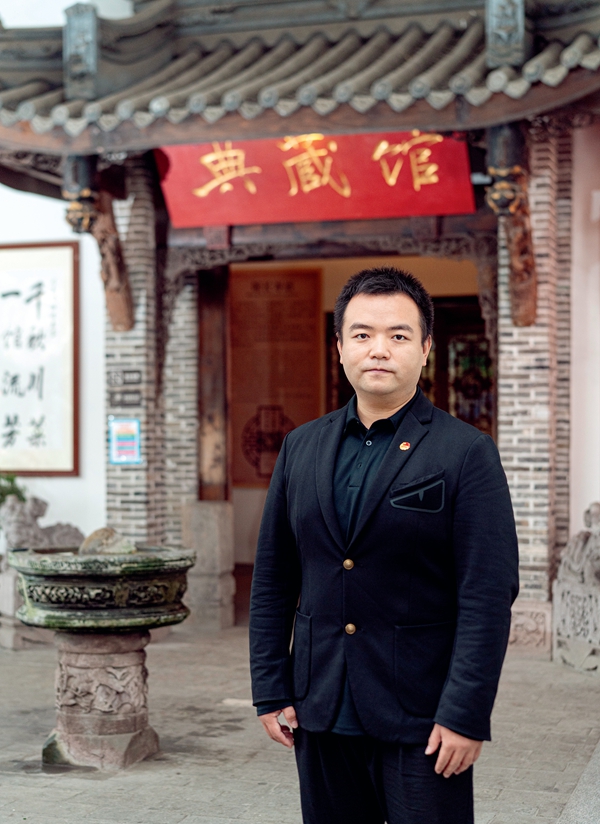
成都川菜博物馆馆长芶思。
刚开始,芶思内心虽然有憧憬和激动,也难免忐忑。后来,在父亲的鼓励下,他决定接手博物馆,将自己心中所描画的蓝图一步步变为现实。
芶思秉承了老馆长建设川菜博物馆的初心——更好地传承和弘扬川菜文化。但是在实现的路径上,他有自己的想法。以前,对于如何弘扬川菜文化,大多数人的想法是:开川菜馆,开更多的川菜馆。川菜博物馆也未能免俗,开了餐厅,生意也还不错。
芶思接手川菜博物馆的第四年,做了一件当时看起来非常“叛逆”的事:停掉了博物馆的餐厅业务——尽管这是当时川菜博物馆主要的收入来源。他投入500余万元,将原来的餐厅升级改造,全面转型,打造互动体验文旅项目。
一时间,博物馆突然断掉了收入来源,又要投入大量的资金进行升级改造,而博物馆运营的人工、水电等各项开支一样不少,资金“压力山大”。那段时间,跑银行、到处找资金成了芶思的家常便饭。
其实,这次转型升级并非芶思心血来潮。他和团队前期做了大量的调研和推演,足迹遍及北京、广州、郑州、桂林,甚至泰国、新加坡,为打磨互动型新项目做了充足的准备。
功夫不负有心人,2015年“玩川菜——川菜文化互动体验之旅”一经推出,就以其颠覆性的参观体验赢得了广大游客的喜爱。在全新的川菜博物馆里,游客不但可以静态参观,通过典藏馆陈列的数千藏品了解川菜的历史文化,还可以眼观、鼻闻、口尝,亲自参与互动,体验川菜的刀工火候、色香味形,全方位感受川菜文化的魅力。参与性和互动性大大增强,丰富了“一座可以吃的博物馆”的内涵和外延,实现了让参观“动起来”、让文化“活起来”的畅想。
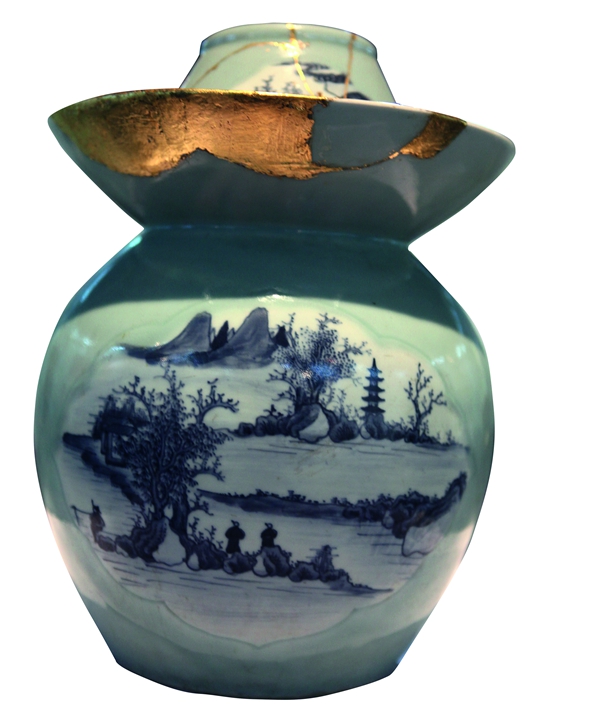
青花四开光山水人物纹泡菜坛。
也正是这次成功的转型,为川菜博物馆后续的延伸教育和文化服务类活动的开展打下基础。目前,第一批从事双语川菜国际化教育的师资力量和大量的外籍川菜学员已经从“川菜国际化教育示范培训基地”培训结业,川菜文化将通过他们走向更广阔的世界。
自川菜博物馆建成开馆至今,已经过去15个年头。从开馆时的少人问津,到2019年年接待游客量突破60万人,再到今年被评为“全国科普基地”“优秀省级科普基地”,芶思深感自豪。
2022年4月,成都市第十四次党代会提出,要保护传承川菜、川茶、川酒等“老字号”文化和技艺,建设国家美食文化交流创新中心,打响“舌尖上的成都”美食品牌。
这正是川菜博物馆的使命和发展方向。芶思说:“我们应该不忘初心,守住优秀传统文化,这是我们的文化之根和精神命脉,会源源不断地供给我们营养和智慧。同时也要融会贯通,将优秀传统文化学以致用,在应用中传承。"
In 2018,Fuchsia Dunlop,a British,appeared in the food documentary Once Upon a Bite,speaking in authentic Sichuan dialect as she hung around a Chengdu food market:"Master,what kind of chili is this?Do you have the Er Jing Tiao(atype of peper as seasoning for Sichuan cuisine)?"Over the years,she has reproduced the Sichuan flavor of 200 classic dishes in her London kitchen,and these dishes include fish flavored pork slices,Kung Pao chicken,sliced beef and ox tongue in chili sauce,which have already been familiar to the customers,and the unique Qiaotou Yinen,water Tofu pudding,and baked egg pancake.
"Five flavors are harmonious,all flavors are combined together to produce delicacy,and taste is the soul".Sichuan cuisine,one of the eight major cuisines in China,is now popular all over the
world.Sichuan restaurants have begun to stood in great numbers in the cities of Western countries,Mapo Tofu has become popular all over the world,and Sichuan pepper have flown abroad and been spread all over the world.
In February 2010,Chengdu was awarded the honorary title of"City of Gastronomy"by UNESCO.The highly developed gourmet food industry,the professional gourmet food institutes,and a number of excellent chefs and their traditional cooking skills have made Chengdu the first Asian city to win this special honor.It owns dozens of"firsts"in China and the world,including the first winery in China,the first tea culture center and the first culinary industry base,hot pot,oil tea,Long Chaoshou,
Mapo tofu,and yellow cartfish,..."A bite of Chengdu"amazes the taste buds of diners and becomes a shining name card of Chengdu.
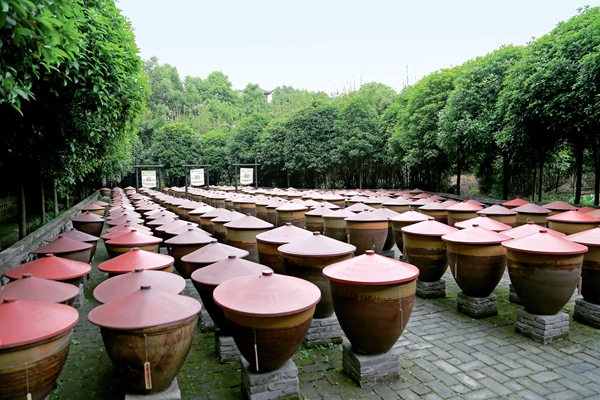
The traditional craftsmanship demonstration zone for Pixian pea sauce and Zhongba soy source.
When did Sichuan cuisine come into being and how has it evolved?What was Sichuan cuisine like before chili came to China?Why is Pixian Horsebean Chili Paste known as the"soul of Sichuan cuisine"?Why is the Chaoshou wrapper square and the dumpling wrapper round?...These questions can be answered at the Chengdu Sichuan Cuisine Museum.
The Sichuan Cuisine Museum,covering an area of more than 40 mu,has been built in a style of western Sichuan dwellings and the structure of Sichuan style garden,which forms a unique cultural landscape of ancient Kindom of Shu in Chinese history.The Museum has a large amount of collection,among which more than 6000 pieces of objects and ancient records from different historical periods have been exhibited in the Collection Hall.Some of these collections are invaluable.For example,the"Four-Opening Pickle Jar with Landscape and Figure Pattern"in the Kangxi Period of the Qing Dynasty is one of the"treasures of the Museum".
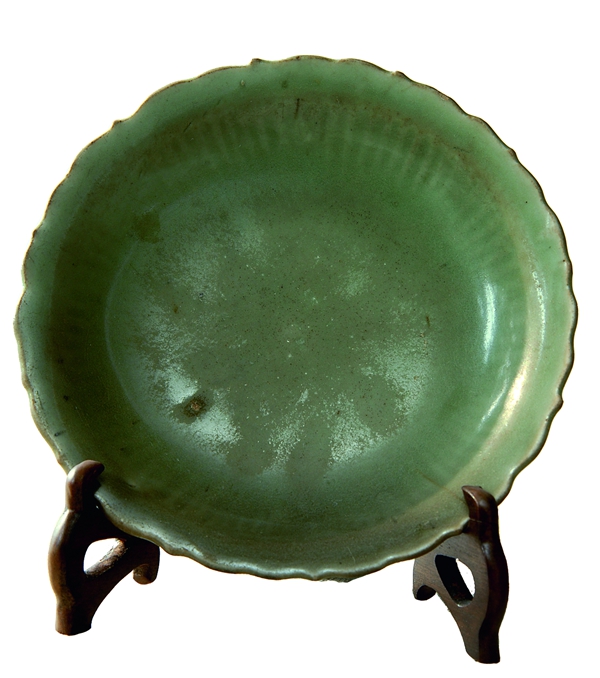
Cyan glazed plates in Yuan dynasty.
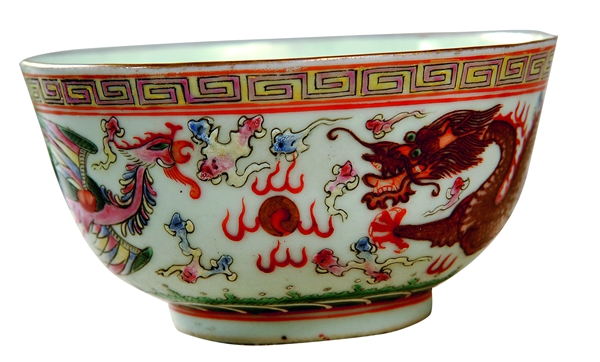
Bowls printed with colored dragon and phoenix in the years of Emperor Guangxu, Qing dynasty.
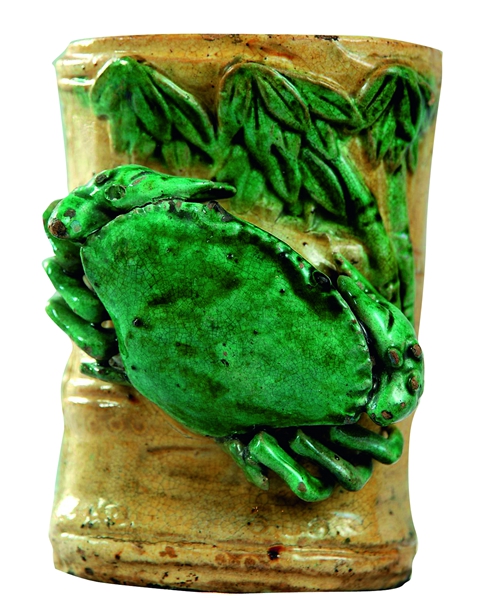
Yellow and green glazed chopsticks box for armoured generals in Qing dynasty.
After decades of collection,preparation and construction,the Sichuan Cuisine Museum was opened on May 18,2007.The former curator was Gou Si's father.Gou Si witnessed the whole process of the birth of the Sichuan Cuisine Museum.He deeply fell in love with the career since he was influenced from childhood.In 2010,when Gou Si returned from overseas study,his father had a long talk with him.During the talk,Gou Si revealed his plan for the development of the Sichuan Cuisine Museum,and Gou's father thought that his idea was very insightful,thereby allowing him to take over the business of museum management.
At the beginning,Gou Si was excited and ambitious but felt uneasy inevitably.Later,encouraged by his father,Gou decided to take over the museum to turn his blueprint into reality step by step.
Gou Si stayed true to the original aspiration of the former curator when he built the Sichuan Cuisine Museum-to better pass down and promote Sichuan cuisine culture.But he had his own ideas on the path to realization.In the past,most people hold the view that building and opening more Sichuan restaurants is an effective way to promote Sichuan cuisine culture.The Sichuan Cuisine Museum had also opened the restaurants,which ran well.
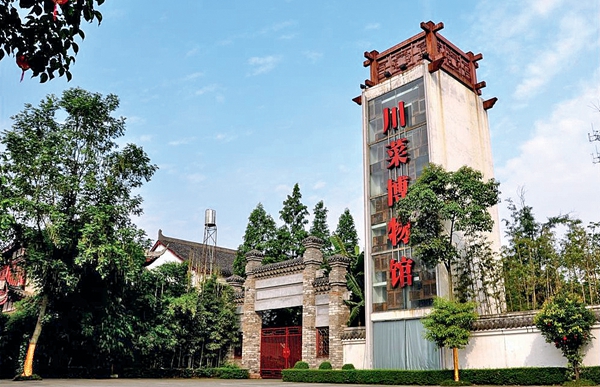
Exterior view of Chengdu Sichuan Cuisine Museum.
In the 4th year since he took over the Sichuan Cuisine Museum,Gou Si did a thing that seemed very"rebellious"at that time:he shut down the restaurants of the Museum,even though they were the main source of income for the Museum at that time.He invested more than RMB 5 million to upgrade and comprehensively transform the original restaurants,creating cultural tourism projects for interactive experience.
The museum suddenly lost its main source of income,and a large sum of fund had to be invested in the upgradation and transformation.Operating costs of the Museum,like labor expenses and utlity fees,also put huge financial pressure on Gou.During that time,it was not unusual for Gou Si to visit banks to seek help and raise fund everywhere.
In fact,this transformation and upgradation of the Museum was not a whim of Gou Si.He and his team did a lot of research and analysis in the early stage,leaving the footprints in Beijing,Guangzhou,Zhengzhou,Guilin,and even Thailand and Singapore,to make adequate preparation for the development of new interactive projects.
The hard work eventually pays off.In 2015,once the"Play Sichuan Cuisine Interactive Experience Tour of Sichuan Cuisine Culture"was launched,it gained the favor of tourists for the fire new visiting experience.In the entirely new Sichuan Cuisine Museum,visitors can not only take a static tour to get known the historical culture of Sichuan cuisine through thousands of collections displayed in the Collection Hall,but also watch,smell and taste Sichuan cuisine,personally experiencing the cutting technique and heating in the process of making Sichuan cuisine,as well as the color,shape,flavor,taste of the dishes,to feel the charm of Sichuan cuisine culture in an all-round way.The participation and interaction have been greatly enhanced,enriching the connotation and extension of"an edible museum",and realizing the vision of making visits"active"and culture"alive".
This successful transformation has laid foundation for the followup activities of extended educational and cultural services in Sichuan Cuisine Museum.At present,the first batch of bilingual teachers engaged in international education of Sichuan cuisine and a number of foreign Sichuan cuisine students have completed the training from the"Demonstration and Training Base for International Education of Sichuan Cuisine".With their help,Sichuan cuisine culture will be better understood by the rest of the world.
It has been 15 years since the Sichuan Cuisine Museum was opened.While at first the Museum was visited by few people,it received more than 600,000 visitors in 2019,and this year,it is awarded as"National Science Popularization Base"and"Excellent Provincial Science Popularization Base".Gou Si is deeply proud of that.
In April 2022,the 14th Party Congress of Chengdu proposed to conserve and pass down the"time honored"culture,skills and art such as Sichuan cuisine,Sichuan tea and Sichuan wine,and build a national center for food cultural exchange and innovation,to make"A bite of Chengdu"more resounding and known to more people.
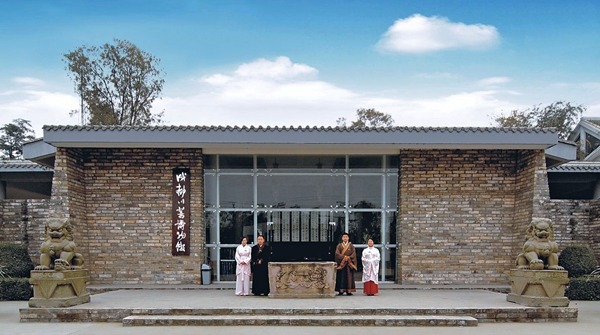
Chengdu Sichuan Cuisine Museum.
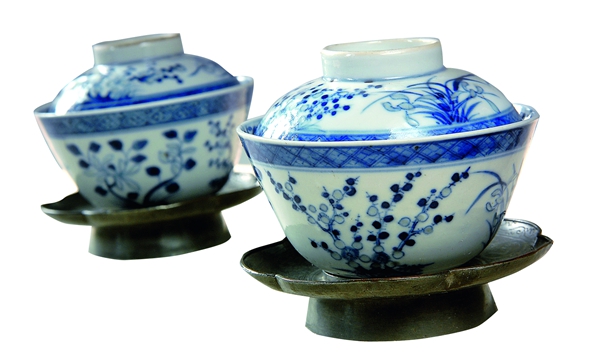
Tureen printed with blue and white flowers in the years of Emperor Guangxu in Qing dynasty.
This is the mission and development direction of Sichuan Cuisine Museum.Gou Si said:"We should stay true to the original aspiration and keep up the excellent traditional culture.This is the root of our culture and spiritual lifeblood,and will continue to provide us with nutrition and wisdom.In addition,we should also perceive how and why,putting the excellent traditional culture into practice,and inherit it in application."
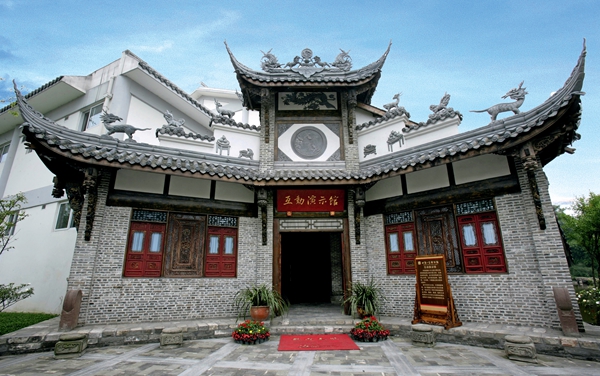









 责任编辑:蔡晓慧
责任编辑:蔡晓慧